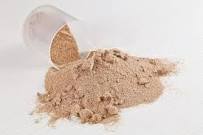There is growing evidence that isolated protein powders may not be the most healthy way to provide protein as part of your nutrition plan. Health and performance are intrinsically linked.
Protein Powder Supplementation
I am starting to shy away from nutritional supplementation. Moving towards a whole food plant based diet when done correctly should supply the body with all the nutrients and proteins you need (vit B12 and Iron could be an exception - although the more I read with a great diet you can get all the IRON you require)
The problem with the commonly used whey and soy type powders is that they will have most of the amino acids (AA) present (isolated). These amino acids ( essentially what constituents protein) need to be assimilated into the body using 5 types of transporters. Some AA are more electrically charged than others therefore dominating the transport mechanisms. This means certain AA will miss out on the transport and not be readily absorbed into the body. Having a processed complete protein powder is actually not the best way to get your complete protein intake (due to lack of uptake of some AA)
From my research it seems to be better to drip feed your protein from whole food sources throughout the day so all the different AA can use the transport mechanisms in the liver to get uploaded for use in the body. If there is a glut of AA all at once (when you take a protein powder shake post workout) then the body can miss out.
Also whey and soy protein powders are highly processed isolating the protein by removing the carbs and fat. This process involves high temperatures and usually chemicals. The resulting protein will have a significantly lower pH than it did before the processing. This makes it acid forming which is not healthy for the body in the long term, and will be detrimental to workout recovery.
Brief explanation of Amino acids.
There are 20 biologically active amino acids in humans. In nature, there are more than 100 amino acids to be found. However, the human uses only 20 of them. Since amino acids are the building blocks of proteins, 20 different types of amino acids is quite alot for the body to work with in many respects. Imagine having an endless supply of 20 different coloured bricks to build houses with? You can put them in different order each time, essentially creating an endless supply of designs. Proteins are no different. Think of proteins as the houses and amino acids as the bricks. Protein design can be virtually endless, and it is. There are thousands of types of proteins in nature, each with varying amounts of amino acids. The varying amounts of amino acids causes the proteins to conform to unique shapes and function.
Amino acids can be placed in the category of either essential or non-essential. The name is self explanatory. Essential amino acids are those that are "essential" in the diet. In other words, we cannot create them through our own metabolism. Therefore, we need to obtain them through foods containing them. Fortunately, protein-containing foods contain varying degrees of the essential amino acids. During times of starvation, our body relies on its own protein stores, such as pre-albumin, albumin, and ultimately protein from sources that it normally shouldn't have to utilise (e.g., muscle tissue, etc.)
Non-essential amino acids are those which can be produced from other amino acids and substances in the diet and metabolism. During times of need, the metabolism can shift into producing the amino acids that it requires for synthesizing proteins essential to our survival. Don't get worried by the media and industry hype that we need lots of protein otherwise you will lose muscle. Out bodies are very good at recycling and some studies suggest we reuse up to 90% daily meaning we don't need to consume as much as is recommended. Don't stress your liver - get a wide variety of amino acids from plant sources. Short term athletic benefit does not always equal long term wellness. Strive to be EVERFIT.


.jpg?version=8)